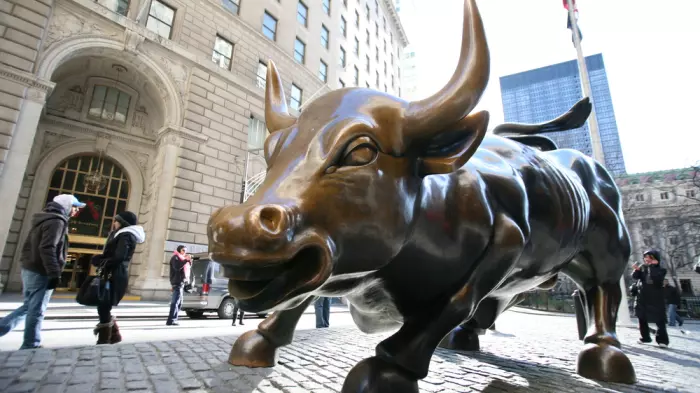New Zealand’s main share index struggled through another day but didn’t come out on top due to relentless headwinds from international markets.
American market heavyweight S&P 500 ended up below 4,000 for the first time since late March 2021 and the tech heavy Nasdaq dropped 4.2% today which created unrest and uncertainty in the New Zealand sharemarket.
The S&P/NZX 50 index fell 152.2 points, or 1.3%, to 11,229.45. Within the broader equity market, an eye-watering 130 stocks fell and only 17 rose. Turnover was $119.9 million.
As if there wasn’t enough geopolitical tension right now, with the world focusing on Russia’s military invasion of Ukraine, China’s zero-covid commitment has also hiked geopolitical concerns and has added to the uncertainty across all international markets over the last couple of days.
The only bright spot in the market’s despondency today was that Russian President Vladimir Putin decided not to escalate Russia’s military invasion in Ukraine after Russia celebrated its World War II victory day yesterday.
Winner, winner, chicken dinner
Just 16 stocks rose and ended the day unscathed from the market trauma.
Ryman Healthcare had a good day, up 6.7% to $8.87. Hamilton Hindin Greene investment adviser Jeremy Sullivan said Ryman had a “volatile” day as it earlier traded up about 2%.
Other big stocks that moved up were vehicle dealership company The Colonial Motor Company which jumped 1.8% to $10.57 and energy company Mercury which rose 2.5% to $5.79.
Rubber products company Skellerup was also up 2.4% to $5.55.
Other stocks that climbed their way up the index today were Metro Performance Glass which lifted 3.6% to 29 cents and Evolve Education Group up 1.4% to 75 cents.
“There are some good quality assets that are starting to look fundamentally undervalued and some of the obvious ones on the upside today,” Sullivan said.
When it rains, it pours
There were a dismal 131 stocks down which created the market’s 1% fall.
Air New Zealand was one of the biggest losers with a plunge of 8.5% to 70 cents. This was likely due to retail investors, who exercised their right to buy new shares at 53 cents each and began dumping them for a quick profit.
Shares in the airline have fallen more than 20% since rights trading closed on May 2. The shortfall bookbuild on May 5 auctioned off unclaimed shares at 81 cents per share.
Chemical company and distributor DGL Group was down 3.7% to $3.16 today, following disgraced chief executive Simon Henry’s very bad week.
Sullivan said the “negative sentiment” around DGL stock was continuing and was showing via the deep fall in its price.
Both Henry and DGL have become familiar names to not just the NZX and ASX but most of the NZ public over the past week – just not for the reasons that any of DGL’s board or shareholders would ever want the industrial company to be known for.
Henry now has 150,917,729 shares in the company, having purchased 500,000 shares between March 11 and March 16 earlier this year for about AUD$1,431,690.19 – or an average of AUD$2.86 a share at the time.
DGL’s share price peaked at NZ$4.50 on April 22 when Henry’s shares were worth NZ$679.1 million.
Yesterday, the share price was down 14.8% to $3.28 yesterday making Henry’s shares worth NZ$496m – a loss of NZ$183.1m from their peak.
Closing tonight down 3.7% to $3.16 makes Henry’s shares worth NZ$476.9 million – an eye-watering loss of NZ$202.2m from the peak.
Shares in Freightways fell another 2.2% to $11 as investors continued to react to its earnings downgrade yesterday.
The company said then its earnings in the second half of 2022 would be $5m to $7m lower due to covid impacts and its share price fell almost 5%.
Today, Jarden analysts Andrew Steele and Nick Yeo reiterated their positive view of the stock but trimmed their target price 3.6% to $13.50.
Steele and Yeo said the company was likely to grow its earnings per share 12% for the next three years, supported by demand from increased levels of e-commerce.
Forsyth Barr analysts were less optimistic, saying in a note today that the outlook was “becoming more challenging” and the covid e-commerce boom could partly reverse.
Channel Infrastructure NZ held its first annual shareholders meeting since rebranding, where board chair Simon Allen announced he will resign later this year. NZX chair James Millar will take over Allen’s role when he does.
The company’s shares were down 0.92% to $1.08.
NZ King Salmon completed its capital raise, bringing in the $60m it needed to support the business, but had to rely on its underwriter to pick up some of the shares on offer.
Shareholders had bought 83.6% of shares offered in the raise at 15 cents apiece, totalling $50.3m, and another $3.5m will be allocated to retail shareholders who over-subscribed. Jarden, as the underwriter, will pick up the leftover $6.3m.
The company’s shares remained flat today at 28 cents.
Currency woes
ASB senior economist Mark Smith wrote in a monthly update this afternoon that consumer spending in NZ had “soared” over the April period, perking up after two months of falling.
Despite the leap, Smith said ASB didn’t expect the momentum of this growth to be sustained, “given our view of mounting headwinds facing the retail sector”.
The Reserve Bank of New Zealand is releasing its latest inflation expectations for the two years ahead this Thursday, with investors wondering if a higher-than-expected lift could fan the flames of steeper tightening soon.
Kiwibank economist Mary Jo Vergara said it was going to be the “main event” that the NZ market was going to be watching this week.
“What will probably be inevitable is that you'll see an uptick in terms of inflation expectations because of household expectations,” she said.
The NZ dollar also suffered today and was trading at 63.39 US cents at 3pm in Wellington, down from 63.74 cents yesterday.
Vergara said the Kiwi had been “falling quite dramatically” over the past month due to the greenback’s strength.
“It's fallen around 9% over four weeks which is quite a big move in terms of currency,” she said.
"But it is interesting as when you're looking at currency, it paints a picture of how other central banks around the world are responding to situations.”















